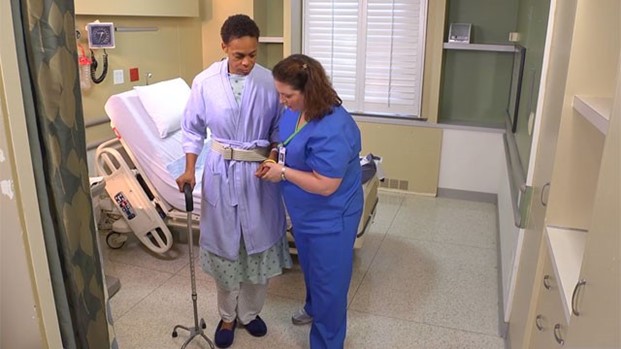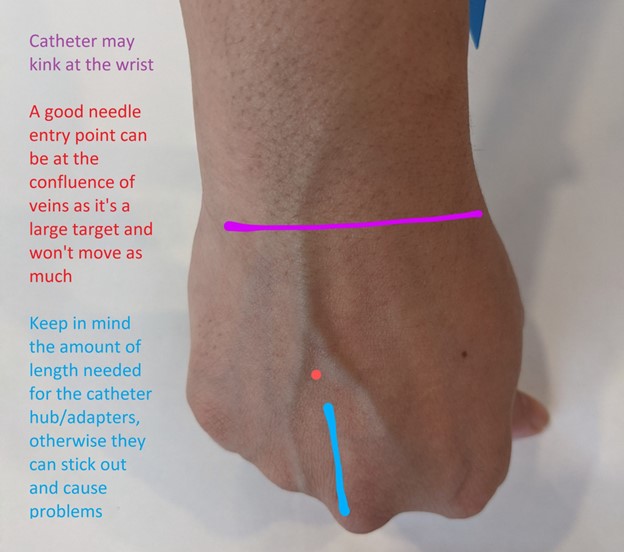A nurse working on a medical-surgical unit is making client assignments for an upcoming shift.
Which of the following tasks should the nurse assign to an assistive personnel?
Showing a client how to use an incentive spirometer prior to surgery.
Assisting with ambulation for a client who has a pulmonary infection.
Irrigating a client's infected surgical wound.
Inserting a glycerin suppository for a client who is constipated.
The Correct Answer is B
Assisting with ambulation for a client who has a pulmonary infection.
Assistive personnel can perform basic nursing care functions such as assisting patients with mobility.

Choice A is wrong because showing a client how to use an incentive spirometer prior to surgery requires more specialized knowledge and training.
Choice C is wrong because irrigating a client’s infected surgical wound is a more complex medical procedure that should be performed by a licensed nurse.
Choice D is wrong because inserting a glycerin suppository for a client who is constipated is also a more complex medical procedure that should be performed by a licensed nurse.
Nursing Test Bank
Naxlex Comprehensive Predictor Exams
Related Questions
Correct Answer is D
Explanation
“I can apply lotion to soften calluses as long as I don’t put lotion between my toes.” This is because moisturizing can help keep skin soft and prevent corns and calluses from forming.
However, it is important to avoid putting lotion between the toes as this can increase the risk of infection 1.

Choice A is wrong because soaking feet in warm water daily can soften corns and calluses, making it easier to remove the thickened skin 2.
Choice B is wrong because while using corn pads can help protect the area where corn has formed, it is important to follow the manufacturer’s instructions for use and removal.
Choice C is wrong because using over-the-counter liquid medication to remove corn is not recommended for people with diabetes.
Correct Answer is D
Explanation
The nurse should place the extremity in a dependent position before inserting an IV catheter.
This helps to dilate the veins and make them more visible and easier to access.

Choice A is wrong because the nurse should choose a site that is distal to the most proximal site on the extremity selected.
This helps to preserve more proximal sites for future use if needed.
Choice B is wrong because applying a cool compress before insertion of an IV catheter can cause vasoconstriction and make it more difficult to access the vein.
Instead, a warm compress can be applied to help dilate the veins.
Choice C is wrong because the tourniquet should be placed above, not below, the proposed insertion site to help dilate the vein and make it easier to access.
Whether you are a student looking to ace your exams or a practicing nurse seeking to enhance your expertise , our nursing education contents will empower you with the confidence and competence to make a difference in the lives of patients and become a respected leader in the healthcare field.
Visit Naxlex, invest in your future and unlock endless possibilities with our unparalleled nursing education contents today
Report Wrong Answer on the Current Question
Do you disagree with the answer? If yes, what is your expected answer? Explain.
Kindly be descriptive with the issue you are facing.
